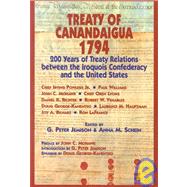| Speech | viii | ||||
|
|||||
| Letter | ix | ||||
|
|||||
| Preface | xi | ||||
|
|||||
|
1 | (6) | |||
|
|||||
|
7 | (6) | |||
|
|||||
|
13 | (2) | |||
|
|||||
|
15 | (20) | |||
|
|||||
|
35 | (8) | |||
|
|||||
|
43 | (24) | |||
|
|||||
|
67 | (9) | |||
|
|||||
|
76 | (8) | |||
|
|||||
|
84 | (36) | |||
|
|||||
|
120 | (7) | |||
|
|||||
|
127 | (22) | |||
|
|||||
|
149 | (13) | |||
|
|||||
|
162 | (13) | |||
|
|||||
|
175 | (8) | |||
|
|||||
|
183 | (44) | |||
|
|||||
| Epilogue | 227 | (6) | |||
|
|||||
| Appendix: Council Fire at Canandaigua: Selected Historical Source Documents | 233 | (75) | |||
|
|||||
|
|||||
|
235 | (5) | |||
|
240 | (3) | |||
|
243 | (3) | |||
|
246 | (1) | |||
|
247 | (1) | |||
|
248 | (1) | |||
|
|||||
|
249 | (3) | |||
|
252 | (6) | |||
|
|||||
|
258 | (1) | |||
|
259 | (1) | |||
|
260 | (35) | |||
|
|||||
|
295 | (3) | |||
|
298 | (6) | |||
|
|||||
|
|||||
|
304 | (2) | |||
|
306 | (2) | |||
| Permissions | 308 | (2) | |||
| Index | 310 | (24) | |||
| About the Contributors | 334 | (1) | |||
| About the Editors | 335 |








